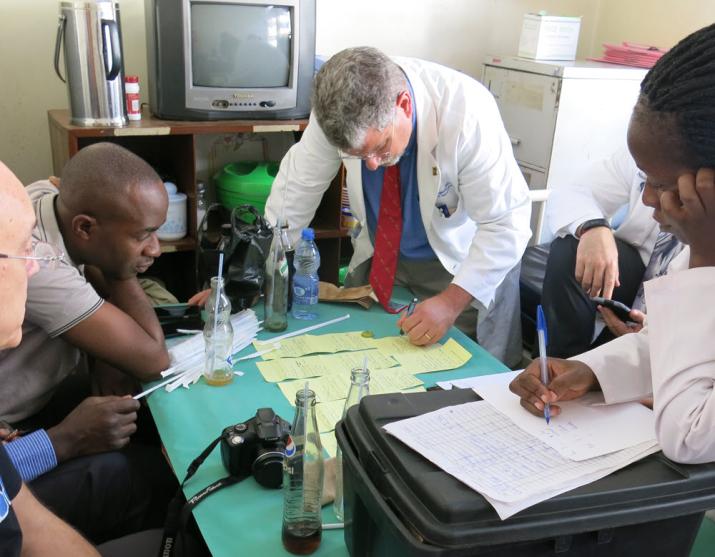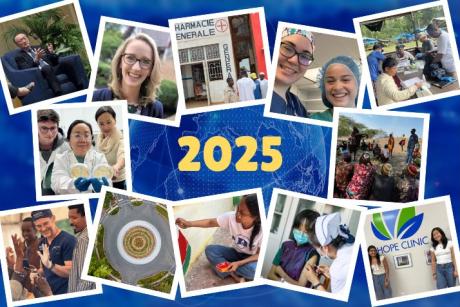
Michael Haglund (center) and collaborators review the cases of potential surgery candidates
Published May 29, 2015, last updated on October 12, 2017 under Voices of DGHI
By Diana Harvey, Associate Director of Communications and Marketing
This post is the first of a three-part series about the bi-annual neurosurgery camp at Mulago Hospital.
In April, Duke neurosurgeon and professor of global health Michael Haglund made his tenth visit to Mulago, Uganda’s large, busy, underfunded and dilapidated national hospital located in the capital city of Kampala. Twice a year, he and a team of surgeons, nurses and students travel to Kampala for a so-called “neurosurgery camp,” performing surgery on as many patients as they can in a week. This time around, I had the opportunity to join them.
Haglund has made it his life’s work to build surgery capacity in underserved settings. As his team of 14 exited the bus on Monday, Haglund encouraged them to, “Be flexible. Be a servant,” words he himself has lived by for his entire career.
The day before, Haglund and his Ugandan colleagues selected the patients through an arduous process. More than a dozen outpatients, referred by Ugandan physicians at Mulago, lined wooden benches in a courtyard at the hospital. Haglund and his Ugandan colleagues studied each patient’s CT scan and other medical information, conferred with the patient and family member and began building a long list of patients and their maladies.
They then moved to the inpatient surgical ward, where Ugandan physicians presented the cases of additional potential patients, ranging from babies with misshapen heads enlarged by hydrocephaly to senior citizens with brain tumors, with numerous types of cases in between.
After visiting with nearly 50 potential patients, Haglund and his colleagues hunkered down around a small table in a break room to begin the task of selecting the patients for the week. The patients’ names and conditions were written on a set of Post-It notes, spread across the table amid sweating bottles of Pepsi and orange Fanta.
The decision-making process took nearly two hours. The physicians weighed many factors, and time was perhaps the most significant consideration. The team had to balance the desire to fit in as many surgeries as possible while favoring more complex cases, which are also the most time consuming.
In the end, 24 patients were selected for surgery. But the inevitable unforeseen delays, complications and equipment failures would mean that despite best intentions, not all of the patients on the list would receive care from Haglund and his team. This is the reality of performing complicated procedures on gravely ill patients in an underserved setting like Mulago Hospital.
Read the other posts in the series:


